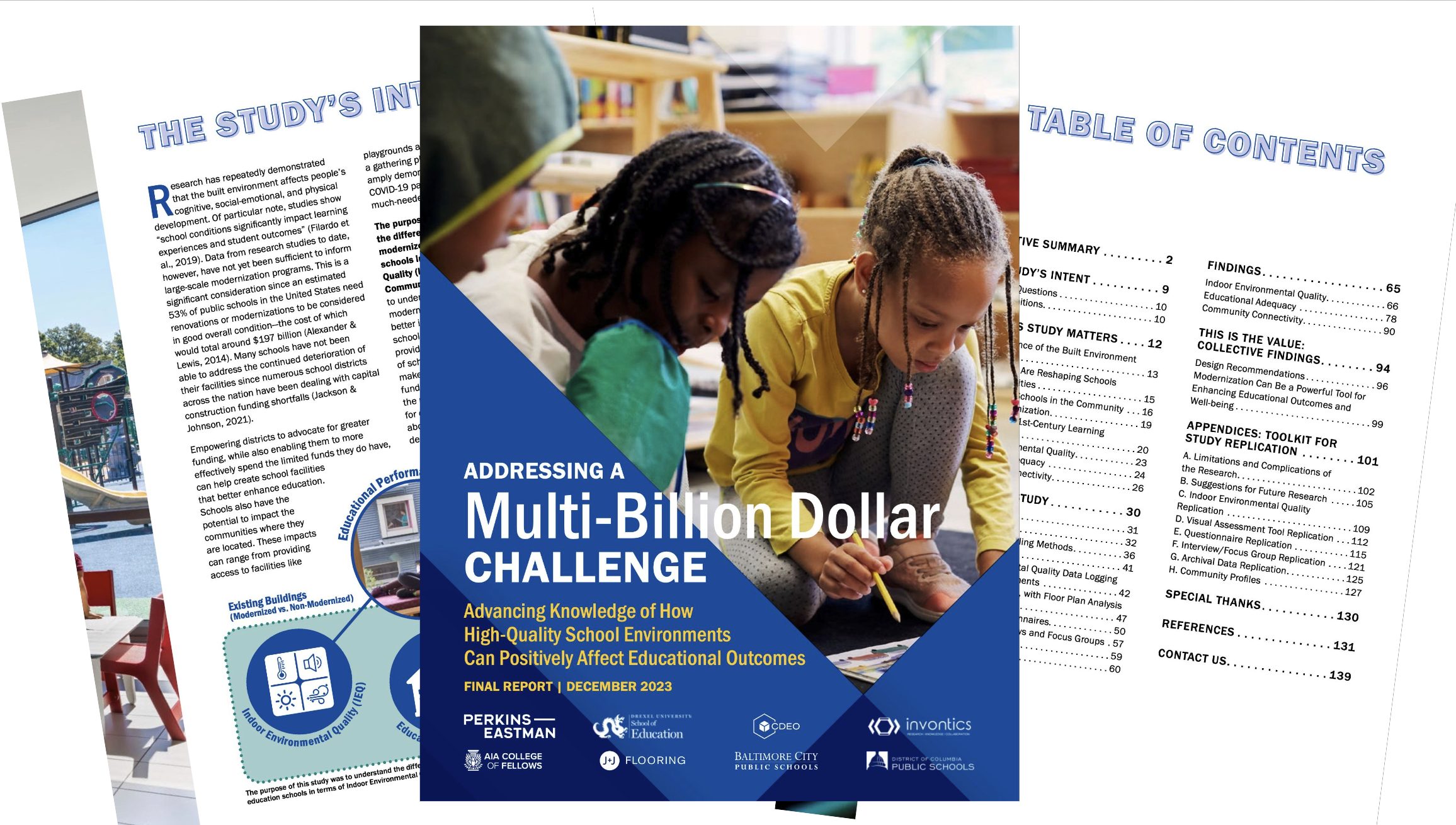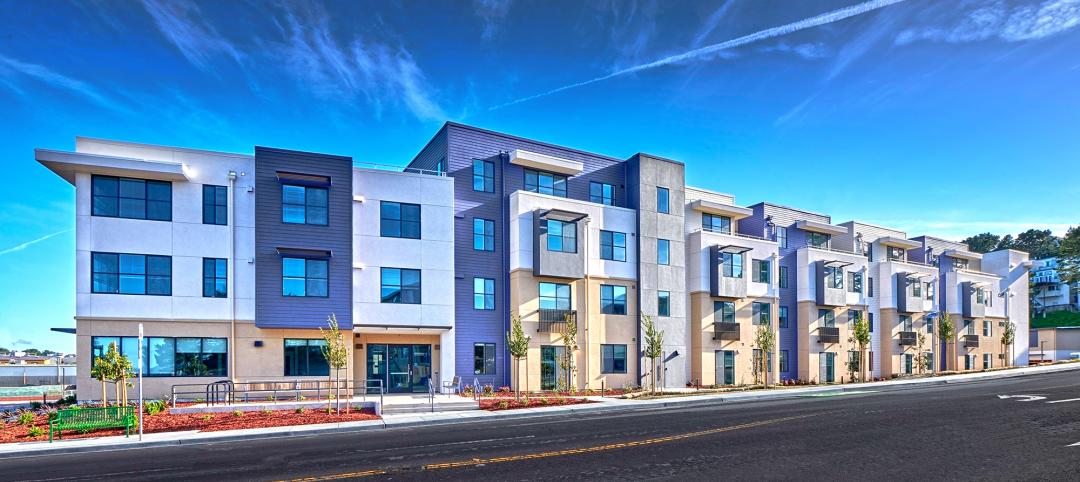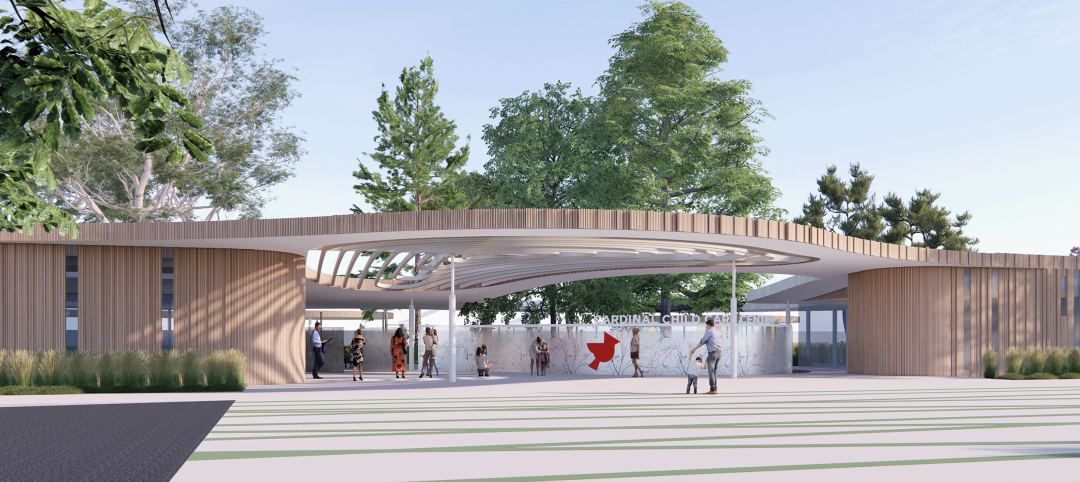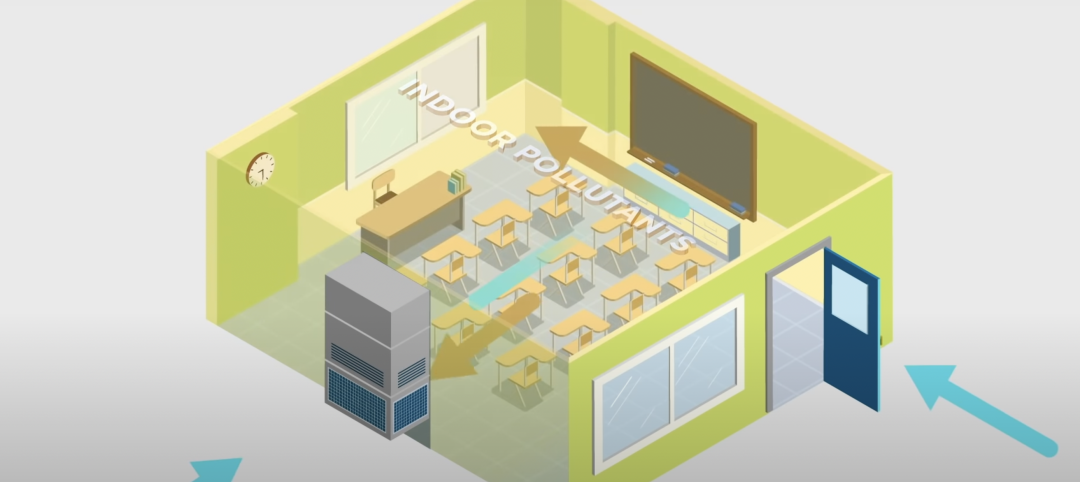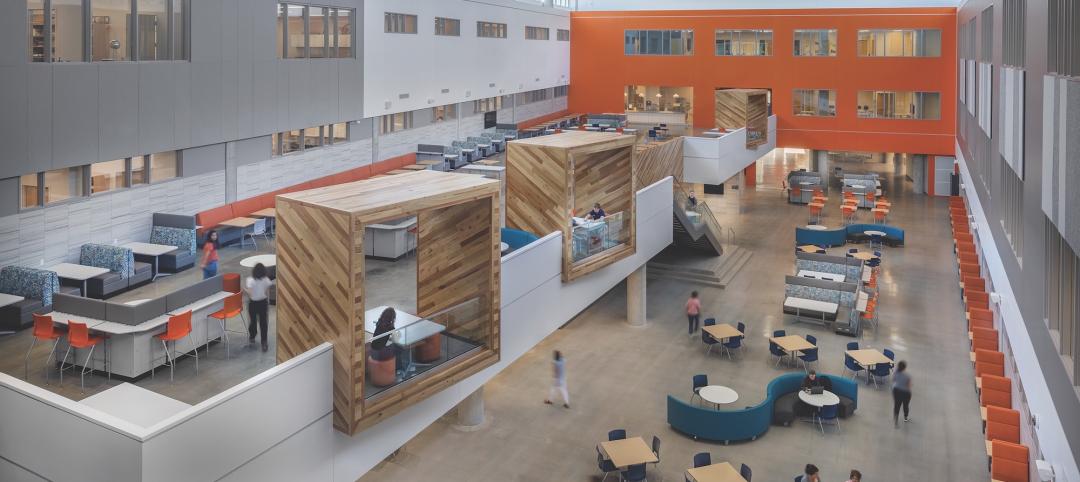The built environment matters. School districts that spend tax dollars to improve their schools can get much more than a new or renovated building. A new study suggests statistically significant connections between school modernization and occupants’ well-being and satisfaction; and that the modernization process enhances community engagement and connectivity. Evidence also indicates that school modernization has a significant positive impact on key educational indicators, including test scores, graduation rates, and enrollment over time.
Conducted by the Drexel University School of Education in conjunction with global design firm Perkins Eastman, the 140-page “Addressing a Multi-Billion Dollar Challenge” study (free download) evaluated more than two dozen schools—both modernized and non-modernized—across the District of Columbia and Baltimore City school districts. With tools to measure indoor environmental quality, assessments of design, layout, and ambiance of each building’s interior and exterior, surveys for the people who use the schools, and interviews with community members, the research team concluded that modernized schools outperformed non-modernized schools to the significant benefit of students, teachers, and staff in almost every category. (Download the free PDF report.)
This study was performed against a backdrop of alarming disinvestment in the US public schools that educate more than 49.4 million children across the country, and the average age of a public school in the US is 49 years, according to the National Center for Education Statistics. Furthermore, the annual shortfall in maintenance and improvements for those buildings is $85 billion, according to a 2021 report titled The State of Our Schools.
“Tackling the nation’s inadequate school facilities is a critical step toward supporting equitable education and community resilience,” says Sean O’Donnell, FAIA, LEED AP, principal of Perkins Eastman and co-principal investigator of the study. “Our research [suggests] that modernized schools can make a marked difference in terms of educating our children, enhancing the lives of teachers and administrators, and better engaging with the surrounding communities.” The assessed condition of a school building using these measures, O’Donnell says, “sends a message to everyone about how we value students, families, and our communities, and what our collective hopes for the future are. Modernized schools look toward a better future for all.”
Making the case for K-12 school modernization funding
Identifying the potential benefits of school modernization that will help jurisdictions build a stronger case for the importance and funding of school modernization was the goal of this study. The study’s report also provides design guidelines for how best to spend modernization dollars, as well as tools and guidance for designers and school districts who might benefit by replicating the study’s methods. The researchers found the greatest opportunities for improvement as schools plan for upgrades should focus on instructional space ambiance, exterior presence, safety and security, community assembly space, and main office location. Data revealed that school modernization made a significant impact across multiple indoor environmental quality factors—such as air quality, lighting, acoustics, and thermal comfort—which can all impact students’ ability to focus and learn.
The multi-disciplinary research team for this study investigated the differences between 28 modernized and non-modernized elementary, middle, and high schools. Students showed enhanced academic performance in the updated schools. Modernized schools also hold the potential to enhance community health and wellness while helping to anchor their communities through, among other things, providing health clinics, food distribution, and publicly accessible recreational facilities.
In 2019, the American Institute of Architects College of Fellows awarded Perkins Eastman and the Drexel University School of Education the 10th biannual Latrobe Prize, a $100,000 grant to pursue projects that can demonstrate “direct and practical impact” on people and the architecture industry. J+J Flooring provided an additional grant of $30,000. The team researched Indoor Environmental Quality (IEQ), including thermal comfort, air quality, acoustics, and lighting. Additionally, they studied Educational Adequacy (EA), which considered how well a school’s spaces and design features supported learning and teaching within that environment. Additionally, Community Connectivity (CC), evaluated how a school’s spaces and design features supported stakeholders’ perceptions about, use of, and engagement with the school. The researchers determined that, in multiple categories, modernized schools offered greater IEQ and EA than non-modernized schools, while CC had mixed though favorable results.
Bruce Levine JD, clinical professor and director of the Educational Policy Program at the Drexel University School of Education and co-principal investigator of this study, says, “The future of America’s students and their families demands that we act now to improve the academic settings where we strive to educate our young people. Investing in modernizing our schools can and will make a difference not only in the experiences of students and educators but in the ripple effects for society, our economy, and national interests.”
Related Stories
Multifamily Housing | Dec 21, 2022
Bay Area school district builds 122 affordable apartments for faculty and staff
The 122 affordable apartments at 705 Serramonte, Daly City, Calif., were set aside not for faculty and staff at Jefferson Union High School District.
K-12 Schools | Dec 20, 2022
Designing an inspiring, net zero early childhood learning center
LPA's design for a new learning center in San Bernardino provides a model for a facility that prepares children for learning and supports the community.
Sponsored | Resiliency | Dec 14, 2022
Flood protection: What building owners need to know to protect their properties
This course from Walter P Moore examines numerous flood protection approaches and building owner needs before delving into the flood protection process. Determining the flood resilience of a property can provide a good understanding of risk associated costs.
HVAC | Dec 13, 2022
Energy Management Institute launches online tool to connect building owners with HVAC contractors
The National Energy Management Institute Inc. (NEMI) along with the Biden administration’s Better Air in Buildings website have rolled out a resource to help building owners and managers, school districts, and other officials find HVAC contractors.
Education Facilities | Nov 30, 2022
10 ways to achieve therapeutic learning environments
Today’s school should be much more than a place to learn—it should be a nurturing setting that celebrates achievements and responds to the challenges of many different users.
K-12 Schools | Nov 30, 2022
School districts are prioritizing federal funds for air filtration, HVAC upgrades
U.S. school districts are widely planning to use funds from last year’s American Rescue Plan (ARP) to upgrade or improve air filtration and heating/cooling systems, according to a report from the Center for Green Schools at the U.S. Green Building Council. The report, “School Facilities Funding in the Pandemic,” says air filtration and HVAC upgrades are the top facility improvement choice for the 5,004 school districts included in the analysis.
Energy-Efficient Design | Nov 14, 2022
How to achieve net zero energy in five steps
Martine Dion and Ethan Seaman share net zero energy best practices with owners and developers.
K-12 Schools | Nov 1, 2022
Safety is the abiding design priority for K-12 schools
With some exceptions, architecture, engineering, and construction firms say renovations and adaptive reuse make up the bulk of their work in the K-12 schools sector.
BAS and Security | Oct 19, 2022
The biggest cybersecurity threats in commercial real estate, and how to mitigate them
Coleman Wolf, Senior Security Systems Consultant with global engineering firm ESD, outlines the top-three cybersecurity threats to commercial and institutional building owners and property managers, and offers advice on how to deter and defend against hackers.
Education Facilities | Oct 13, 2022
A 44-acre campus serves as a professional retreat for public-school educators in Texas
A first-of-its-kind facility for public schools in Texas, the Holdsworth Center serves as a retreat for public educators, supporting reflection and dialogue.


